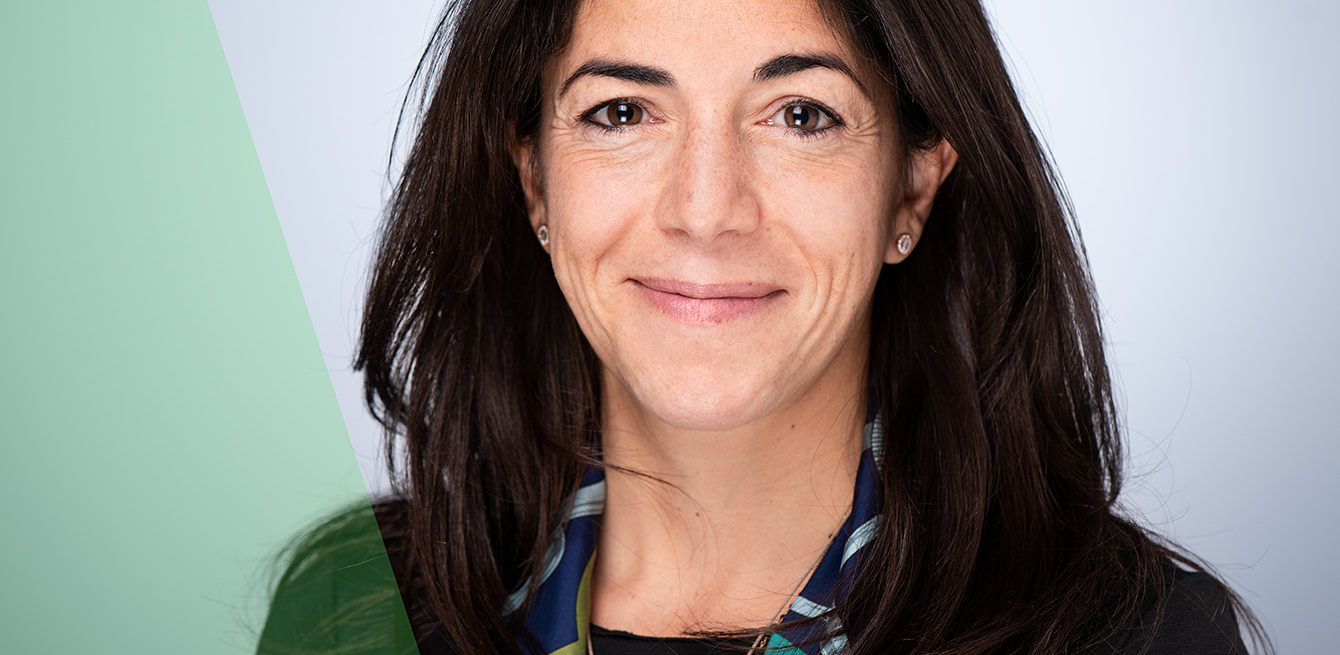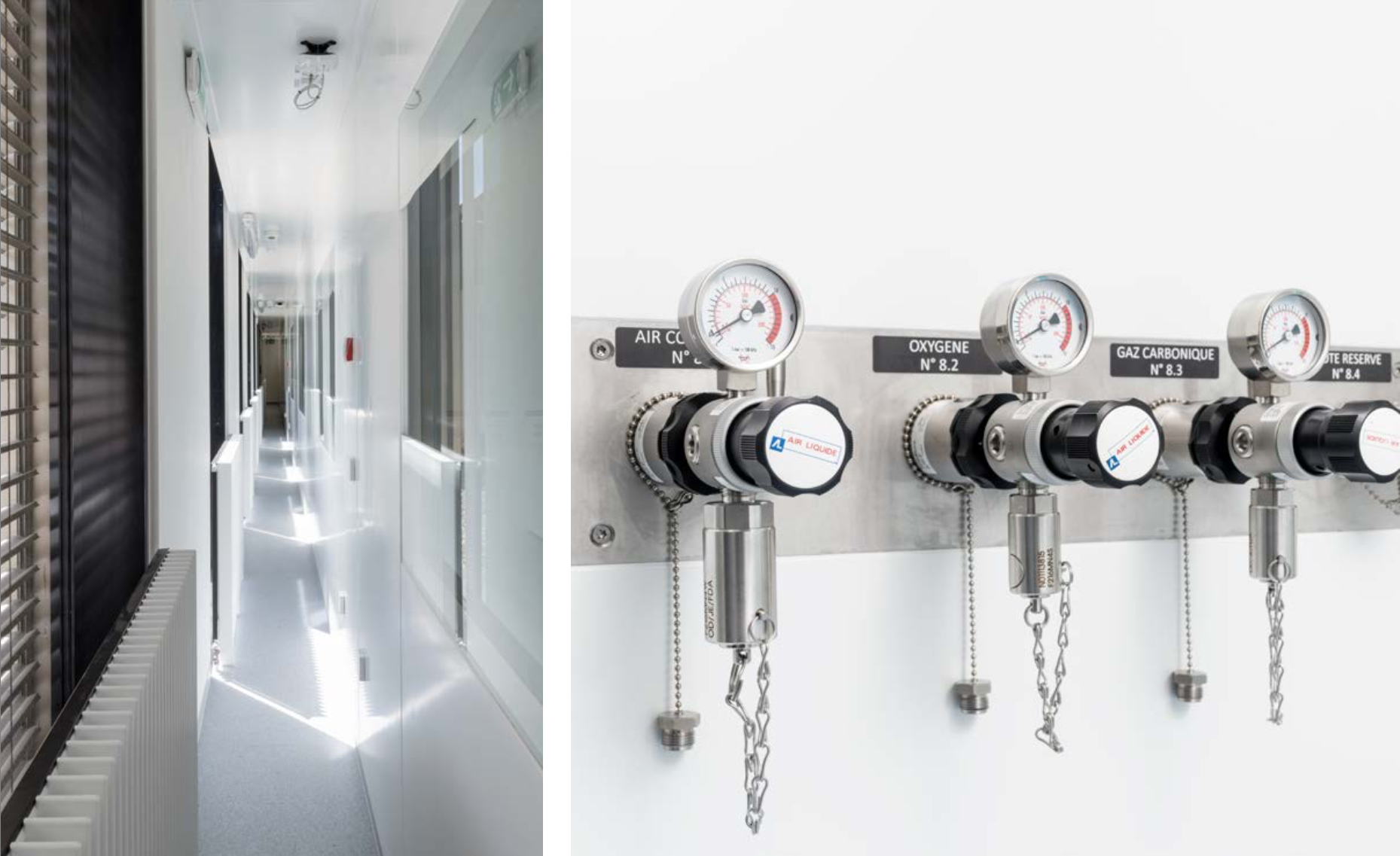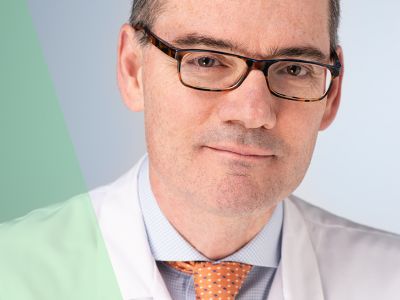
Whilst approximately 100 research protocols against cancer are currently open at CHUV, all coordinated within the Experimental Therapies Centre, Lana Kandalaft walks us through the challenges of setting up a clinical trial: the intricate path from the laboratory to the patient's bedside.
As Prof. Lana Kandalaft, Head of the Experimental Therapies Centre (ETC) at CHUV, confides, “Our mission is to transform scientific discoveries into medical treatments as effectively and as quickly as possible.” A tailor-made mandate for this outstanding “accelerator”, who readily admits that she does not have much patience.
Since her arrival in Lausanne in September 2013, this Lebanese-born scientist, who had until then directed research in the Ovarian Cancer Research Centre at the University of Pennsylvania in the USA, has worked tirelessly to set up a unique structure in the Swiss field of oncology. She has achieved this with Prof. George Coukos, whom she views as her mentor and who has worked alongside her to this end. “The first two years were hard,” she admits, “but today things are booming and we are starting to see the results of our efforts, which is very stimulating.”
Lana Kandalaft's team forms the interface between pure research and clinical research performed in the UNIL-CHUV Department of Oncology. As she explains, “The centre is a bridge, a pathway between researchers working in the laboratory and the clinicians who are closest to the patients.” By its very nature, the Centre ensures a permanent dialogue between these two worlds, in which experts examine all the indications for the administration of a treatment and evaluation of its effects. With this strong “translational” culture, the ETC plays a fundamental role in the development of treatments available to patients.
As Lana Kandalaft points out, “It can take up to 20 years before a product or a treatment developed in the laboratory becomes available to patients, but faced with a disease as fearful as cancer, there is no time to lose.”
Although the ambition of the Experimental Therapies Centre is thus to “accelerate the pace” and to “push innovative treatments”, the passage from the laboratory to the patient's bedside involves an immense and detailed amount of preparatory work, even when the conditions are particularly favourable. To have any hope of being “transformed”, a clinical trial must, in practice, adhere to a strict protocol and satisfy numerous criteria.
The first step consists of converting what is often only a scientific concept into a process complying with good practices. “It is at this point in time that the scientists, having produced encouraging results in the laboratory, often in mice, or having taken note of promising studies elsewhere in the world, turn to the team at the Experimental Therapies Centre to design a clinical research protocol.”
This approach raises a whole series of ethical questions, the main one relating to safety: has the potential benefit and improvement of the patient's quality of life been demonstrated and is that potential greater than the risks involved?
From this fundamental question, a committee comprising, among others, a doctor, a scientist, a biostatistician, a nurse, a coordinator and a data manager, evaluates the pros and cons, and analyses all the available information before starting to write the protocol as such.
“We do not proceed with a clinical trial unless the expected benefit outweighs the risk to the patient.”
To ensure feasibility, the protocol must also plan the operational sequence in the minutest detail, leaving nothing to chance. “We calculate everything, sometimes down to the last minute,” comments Lana Kandalaft, who cites the example of the trial followed here in Immersion, where the time between each key stage is strictly controlled. The expertise of the team led by Kim Ellefsen-Lavoie, Operations Director at the Experimental Therapies Centre, as well as that of the care staff, is indispensable: “They will be able to tell us, for example, if a patient, could be transported in the times required by the protocol or if the time allotted to preparation before an intervention is realistic.”
Finally, when the protocol is judged to be safe and feasible, the third challenge is that of efficacy. The biostatisticians play a key role here: “They help us to optimise the protocol so that we can respond quickly if, despite everything that we have anticipated, something untoward happens. The aim is to create room for manoeuvre that allows us, if necessary, to be more responsive and effective.”
Once the protocol has taken shape and the Scientific Committee of the Department of Oncology considers that it complies with the three criteria of safety, feasibility and efficacy, it is submitted to the authorities.
The teams led by Laetitia Rossier, Head of Regulatory Affairs, and Silvia Martin Lluesma, from the Clinical Research Unit, prepare a dossier for the Swiss Agency for Therapeutic Products (Swissmedic), which generally comprises about ten documents, from the protocol itself to the consent forms, including a step-by-step description of the manufacture of the product, the case record forms and the monitoring plan. Apart from being able to rely on the teams’ proficiency in writing complex protocols, the strength of the Experimental Therapies Centre lies also in the teams of Emanuela Marina Iancu, Head of Quality Assurance, and Philippe Gannon, Head of Process Development for the Tumour Treatment Unit and the Oncology Cell Production Unit, who manufacture the product in cooperation with those involved in clinical supervision.

Thanks to funding of CHF 18.5 million granted in 2014 by the Grand Council of Vaud for its construction, CHUV has a cell production laboratory for immunotherapy. Inaugurated in September 2016, the facility is located on the ground floor of the Biopôle 3 building in Épalinges and is essentially intended to promote clinical innovation (photos by Matthieu Gafsou).
Once the dossier has been filed, Swissmedic takes between 30 and 60 days to examine all these documents in minute detail, sometimes sending them back and forth, before making their decision. The protocol is also submitted to the Cantonal Ethics Committee for Human Research, which looks more specifically at the issues related to patient consent.
If – and only if – these
two bodies give the green light, the trial can – finally – get underway. Every patient
who wants to take part is informed and advised by a senior oncology specialist before
being taken through the entire consent procedure. In the case of the phase I
clinical trial which concerns us here, open to patients with metastatic melanoma,
this is the stage where our Immersion starts. /
Lana Kandalaft joined the UNIL-CHUV Department of Oncology in 2013, where she set up the Experimental Therapies Centre (ETC). She obtained a doctorate in pharmacy and a doctorate in cellular and therapeutic biology in Great Britain before joining the Cell Biology and Cancer Section of the US National Cancer Institute, where she completed her post-doctoral training and became established as a researcher into the biology of cancer. She has notably directed research in the Clinical and Translational Department of the Ovarian Cancer Research Centre at the University of Pennsylvania. The objective of Prof. Kandalaft's research group is to optimise all cancer vaccines, with the aim of developing individualised cancer vaccines based on genetic engineering. The research also focuses on the establishment of individualised vaccines in clinical practice.
/
Number of ongoing clinical trials at CHUV and HUG in the field of oncology, according to the Réseau romand d'oncologie website.
/
Number of clinical research protocol pages we are following as part of this Immersion series.
/
Number of CHUV staff specifically trained for this phase I clinical trial.
The aim of this phase is to test the tolerability of the treatment. The effects of its diffusion in the body are observed (absorption, distribution and transformation by the body). Between 20 and 80 volunteers are recruited.
The aim of this phase is to test the safety and efficacy of the treatment. The dose is defined and the side effects revealed. This phase is also called "pilot study". Between 100 and 300 patients are recruited.
In this phase, the results for the medicine and/or the technique are compared with the current standard treatment (or placebo). This phase is also called a "pivotal study". Between 1,000 and 3,000 patients are recruited.
The medicine and/or the technique are available on the market. The medicine and/or the technique as well as the patients are carefully monitored. This phase is also called "post-marketing".

The capital of the canton of Vaud is an oncological research centre which is today recognised throughout Europe. Work on cellular immunotherapy is advancing rapidly and offers a glimpse of a historic breakthrough. This is the story of the team's work, through the eyes of George Coukos.